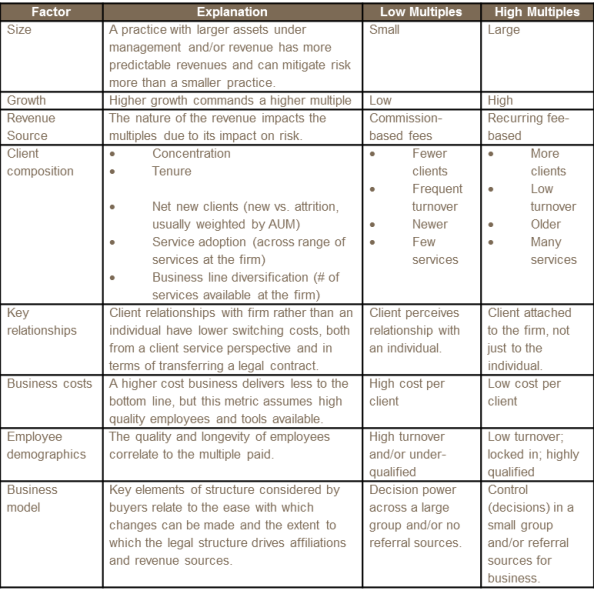We often discuss calculating and presenting investment performance with clients, prospects, and colleagues.
These conversations normally lead to a discussion about the Global Investment Performance Standards and what is allowed or is not allowed.
We are also occasionally asked about calculating and presenting hypothetical, back-tested performance.
Using hypothetical, back-tested performance can be risky because it does not involve actual market risk or client money.
A recent settlement between the SEC and an investment advisor offers a reminder of the difficulty in presenting and disclosing hypothetical, back-tested performance.
This advisor is now struggling to overcome the SEC’s charges and plans to cut its staff by 25 percent – 40 people – as a result of the outflow of assets under management.
The information below summarizes the issues raised by the SEC in its examination of the investment advisor, as noted in the Administrative Proceeding.
Background on the Investment Advisor
The advisor marketed various sector rotation strategies, some of which were based on an algorithm that provided a signal to buy or sell certain industry ETFs.
In 2008, the advisor contracted with a third party to provide the trend signals to the firm.
A positive trend was a signal to be in, or to buy the ETF, while a negative trend was a signal to be out, or to sell the ETF.
The advisor was provided with three sets of trend signals, including those based on a 41-week moving average, a 61-week moving average, and an algorithm developed by the signal provider.
The firm then created a hypothetical, back-tested, historical performance record for 2001 to late 2008.
The advisor began marketing the strategy in 2008 and its marketing presentations included a description of the strategy as well as past performance, including periods prior to 2008.
The firm advertised the past performance as index performance, even though the strategy was not created until 2008.
The main problems with these presentations were that the use of hypothetical, back-tested returns was not disclosed, and that the back-tested performance contained a material error in the calculation.
Disclosures
Disclosures surrounding hypothetical, back-tested returns are inherently tricky.
While SEC rules do not prohibit model-type performance, Rule 206(4)-1 prohibits any advertisement that contains any untrue statement of a material fact, or which is otherwise false or misleading.
Hypothetical, back-tested performance is derived from retroactive application, developed with the benefit of hindsight and without actual money at risk.
Naturally, there will be heightened skepticism surrounding these disclosures.
In this case, the advisor’s advertisements indicated that the performance was based on an active strategy since 2001, and explicitly claimed that the track record for the period 2001 to late 2008 was not back-tested.
The firm also used a combination of the three back-tested returns (41-week moving average, 61-week moving average, and the algorithm) to calculate the return history.
The disclosures did not indicate that different methods were used for different time periods, but rather just referred to the use of the algorithm.
Material Error in the Back-Tested Performance
The back-tested performance used in the advertisements included material errors in the timing at which the trades were implemented, based on the buy or sell signals produced from the averages or the algorithm.
The historical track record reflected that all purchases and sales transactions dictated by the trend signals were implemented one week prior to when they should have been implemented.
This resulted in the historical track record reflecting buy transactions before the prices actually increased and sales transactions before the prices actually declined.
The error resulted in a material misstatement of the firm’s hypothetical, back-tested performance record.
It inflated performance by nearly 350 percent over what it would have been had the signals been implemented with the timing for normal implementation.
Settlement
The advisor consented to a settlement with the SEC for this and several other matters.
The settlement required the firm to hire an independent consultant to perform a full review of its advertising policies and procedures and to issue a report on the results of that review to the SEC.
The SEC settlement also included censure: $30 million in disgorgement and $5 million in civil penalties.
This case clearly demonstrates the need to be very careful when calculating and presenting back-tested or hypothetical performance results, as it includes both errors in the disclosures and in the calculation methodology.
One way to reduce your risk is to eliminate these types of returns from marketing materials.
This approach is consistent with the GIPS standards, which prohibit the use of hypothetical, back-tested performance.
Firms that choose to use hypothetical, back-tested performance should prepare themselves for additional scrutiny, review disclosures and calculation methodologies for potential bias, and consider whether the risks associated with this type of performance presentation are worth the rewards.
We will be happy to provide further information relating to SEC and GIPS compliance. For more information, contact Todd E. Crouthamel at tcrouthamel@kmco.com or 215.441.4600.
You may also like:


 Kreischer Miller was recently named to INSIDE Public Accounting’s nationwide Best of the Best Firms list for 2014. Kreischer Miller is the only accounting firm in the Greater Philadelphia region to be named as a Best of the Best. It has been named to the list three of the past four years.
Kreischer Miller was recently named to INSIDE Public Accounting’s nationwide Best of the Best Firms list for 2014. Kreischer Miller is the only accounting firm in the Greater Philadelphia region to be named as a Best of the Best. It has been named to the list three of the past four years.